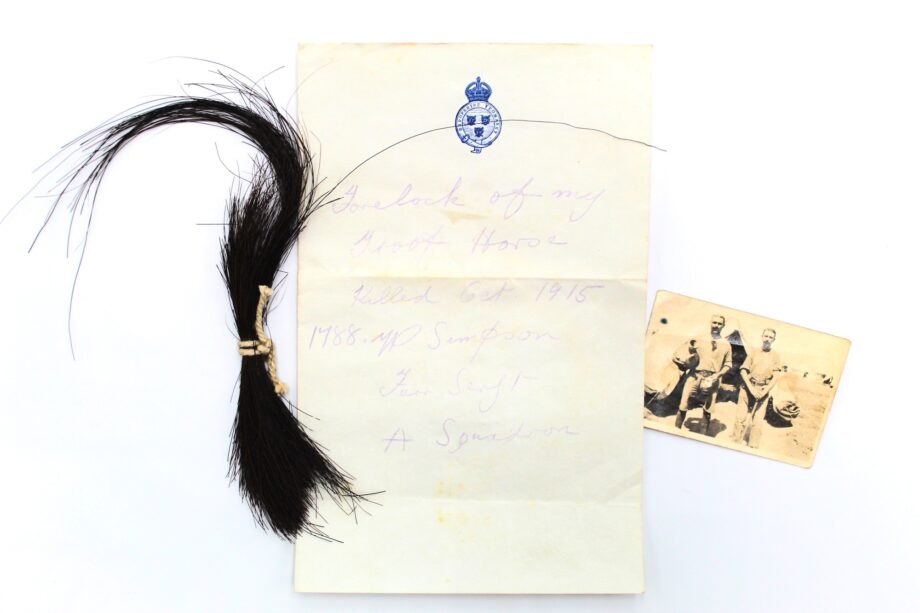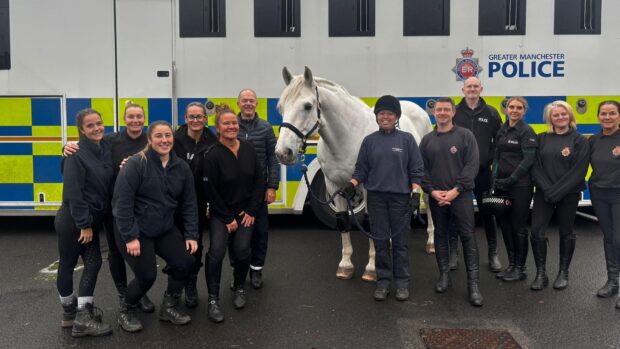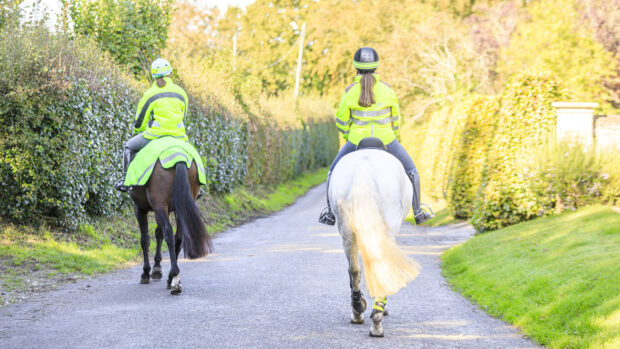“A bond broken by death” – but commemorated over a century later.
A piece of the forelock of a British Army horse who was killed during the First World War and saved for decades by the man who loved him has gone on public display.
William Simpson, from Home Farm, in Calverhall, Shropshire, donated the piece of hair to what is now the Soldiers of Shropshire Museum, 70 years ago. With it was a signed note that reads: “‘Forelock of my Troop Horse, killed 6 Oct 1915”.
William served as a farrier sergeant in the Shropshire Yeomanry cavalry regiment, a part-time volunteer force in peace time. A spokesperson for the museum said it is possible the horse, killed on home service, was originally his own, and taken on for military service.
Robert MacKinnon, curator of the museum’s new exhibition ‘Love War Loss’, in which the hair features, said: “William’s horse may have been injured and euthanised or outright killed in an accident.
“In Victorian and Edwardian Britain, people often kept locks of human hair as mementos of loved ones who had died, believing they symbolised enduring life. William did the same with his horse, cutting the forelock from its head, a tender, intimate place, to grieve and remember. The forelock is the materialisation of a bond broken by death.”
A spokesperson for the museum explained that a troop horse was a personal mount for each soldier, who would have been responsible for its feeding and care, “duties that often fostered a strong emotional bond”.
“Through other material William donated, the museum has been able to build a picture of a man deeply devoted to horses and their welfare and in the most trying circumstances of the First World War in Palestine and France,” he said. Dr MacKinnon added that as a farrier sergeant, William was responsible for the care of many horses; shoeing them and meeting most of their veterinary needs.
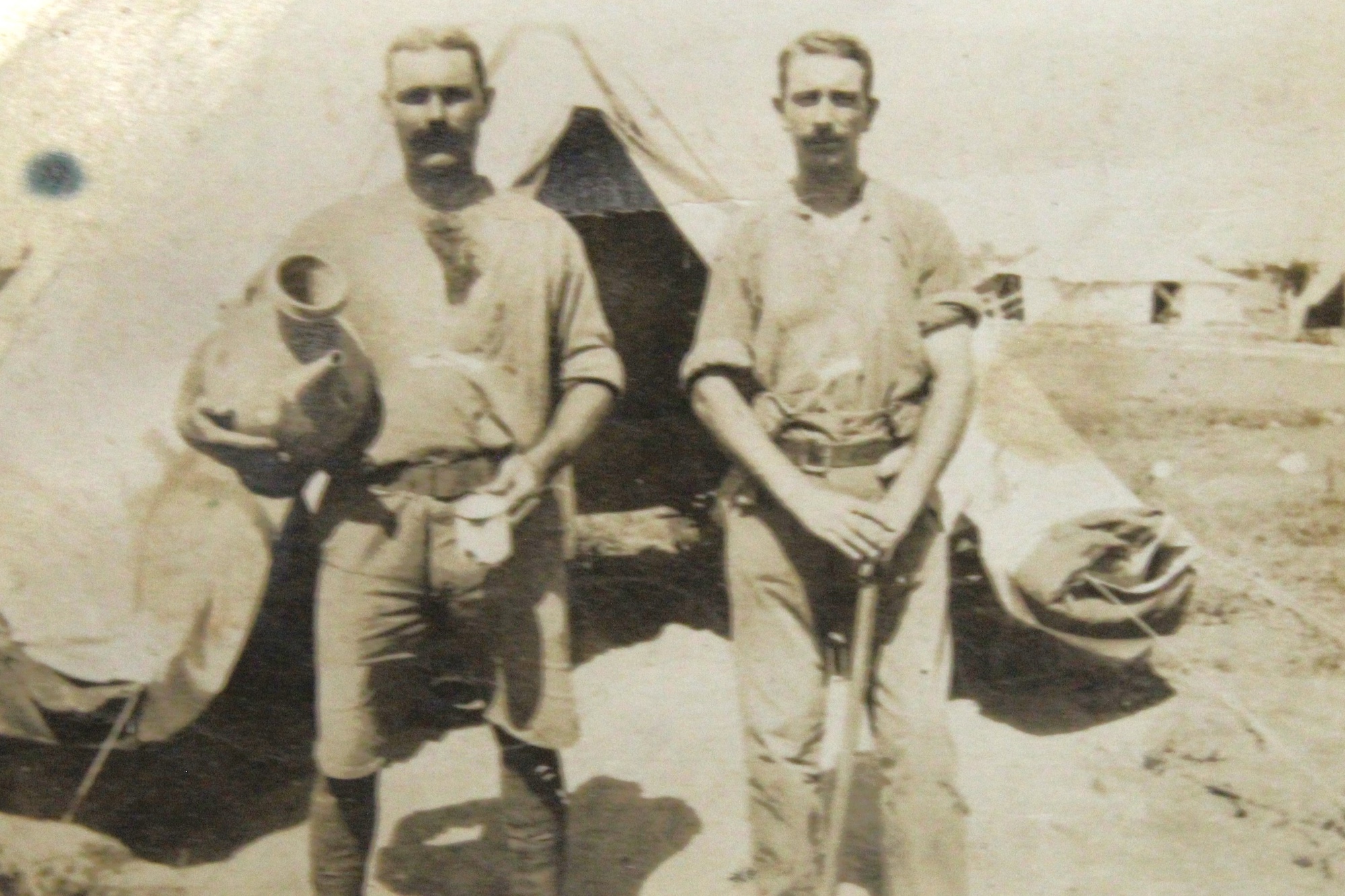
William Simpson (left) and his friend Sergeant Payne at Minya, Egypt, c1916. Credit Soldiers of Shropshire Museum
“There is evidence of William’s deep care for the horses under his supervision, an emotional intensity and one perhaps of love that Dr MacKinnon thinks helped create the bond preserved in the forelock,” the spokesperson said.
In a letter to William in May 1919, when he was demobilised after the war, the officer commanding the 74th Divisional Signal Company wrote: “Your zeal, energy, and efficiency in dealing with the horses was recognised by all who came in contact with you. Several times veterinary officers have remarked that you were the most valuable farrier sergeant that they had met.
“The excellent condition of all our animals was undoubtedly due to your knowledge of horses and horse management. The result was that at the sales following the Armistice the average price obtained for our horses was the highest in the division […] I thank you and wish you all the luck and success in future life that you deserve.”
The Love War Loss exhibition is on display at Shrewsbury Castle until next Easter, to “explore how the family, friends and sweethearts of Shropshire’s First World War soldiers grieved the war death of their loved ones”.
- To stay up to date with all the breaking news from major shows throughout 2025, subscribe to the Horse & Hound website
You may also be interested in:

Lest we forget: lost 1914 poem shows the heartbreak as horses were taken to war

Famous painting of war horse ‘the Germans couldn’t kill’ brought to life
The exhibition will feature more than 40 paintings created by the British artist
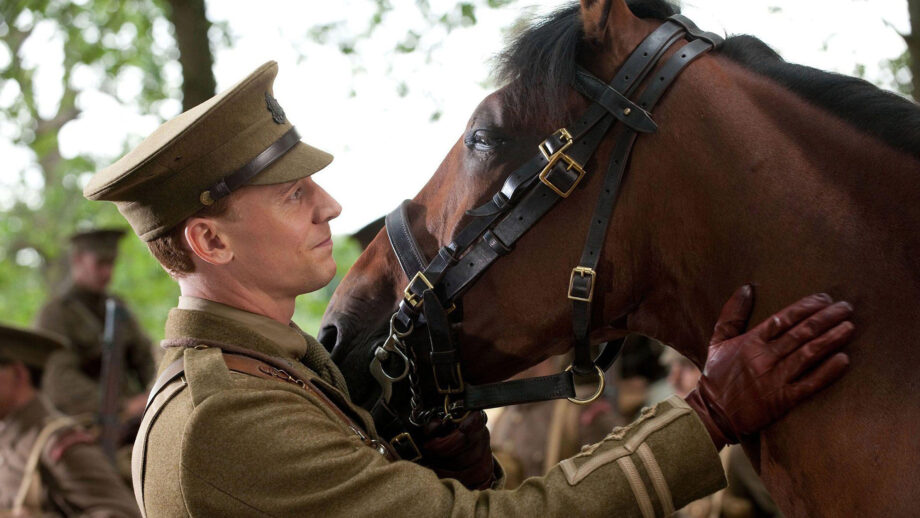
War horses and their evolving role throughout British history

Subscribe to Horse & Hound magazine today – and enjoy unlimited website access all year round

